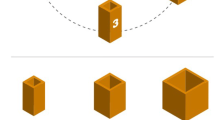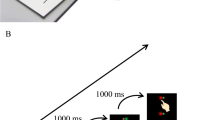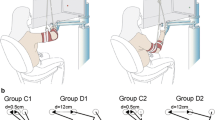Abstract
Nine infants were tested, at the age of onset of reaching, seated on their parent’s lap and reaching for a small plastic toy. Kinematic analysis revealed that infants largely used shoulder and torso rotation to move their hands to the toy. Many changes in hand direction were observed during reaching, with later direction changes correcting for earlier directional errors. Approximately half of the infants started many reaches by bringing their hands backward or upward to a starting location that was similar across reaches. Individual infants often achieved highly similar peak speeds across their reaches. These results support the hypothesis that infants reduce the complexity of movement by using a limited number of degrees-of-freedom, which could simplify and accelerate the learning process. The proximodistal direction of maturation of the neural and muscular systems appears to restrict arm and hand movement in a way that simplifies learning to reach.
Similar content being viewed by others
Author information
Authors and Affiliations
Additional information
Received: 27 July 1998 / Accepted: 26 March 1999
Rights and permissions
About this article
Cite this article
Berthier, N., Clifton, R., McCall, D. et al. Proximodistal structure of early reaching in human infants. Exp Brain Res 127, 259–269 (1999). https://doi.org/10.1007/s002210050795
Issue Date:
DOI: https://doi.org/10.1007/s002210050795




